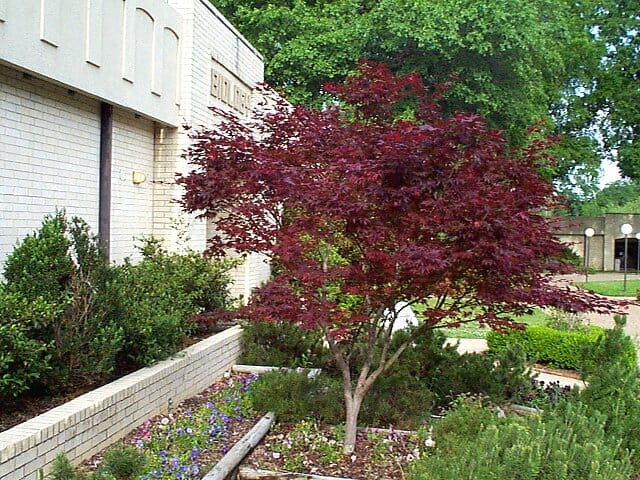

Unique Morphological Features of Plant: Multiple Stems Size of Individual Flower: Smaller than a Quarterįruit Desirable to Birds or Squirrels? No The color darkens in summer to burgundy, or even darker. They bloom in spring, and this is when the red in their foliage is often at its brightest. Most people use them as specimen trees, although they are also used in bonsai. Shape of Individual Flower: Radially Symmetrical The 'Bloodgood' cultivar of Japanese maple is an ideal deciduous tree for smaller yards. Length of Leaf (or Leaflet): Between the Length of a Credit Card and a Writing-PenĬolor of Foliage in Summer: Reddish-BrownishĬhange in Color of Foliage in October: Changes to Reddish-Orange Stem (or Trunk) Diameter: Between The Diameter of a Broom-Handle and a Coffee-MugĬharacteristics of Mature (Brownish) Bark: Smooth Bark with Longitudinal Stripes Manner of Culture: Landscape Shrub-Vine-Tree Most Distinguishing Morphological Features of This Plant: Bright red leaves during fall foliage The Bloodgood has a strong fibrous root system, multiple stems, and slender shoots that end in small paired buds.įamily Name (Scientific and Common): Aceraceae, Maple FamilyĬontinent of Origin: China, Japan, Korea In extremely hot and dry weather, it can be sun burned and become tattered. The Bloodgood requires direct sunlight for as least part of the day, but also needs partial shade. It is a noncompetitive plant and can still grow very well if surrounded by many other plants. It is an easy plant to grow, especially because it does not require large amounts of nutrients, and overall has very few problems. The Bloodgood is a strong growing plant and may grow 2 to 3 feet per year.

It can grow 15 to 20 feet high and has a spreading habit. The Bloodgood has beautiful burgundy foliage its entire growing season and has small, but attractive red fruits. The Bloodgood is commonly planted in gardens as an ornamental tree and is admired for its graceful and peaceful appearance. It is a cultivar named after the Bloodgood Nursery in Long Island, New York, where it was developed. The Bloodgood Japanese Red Maple was introduced into the United States before World War II.


 0 kommentar(er)
0 kommentar(er)
